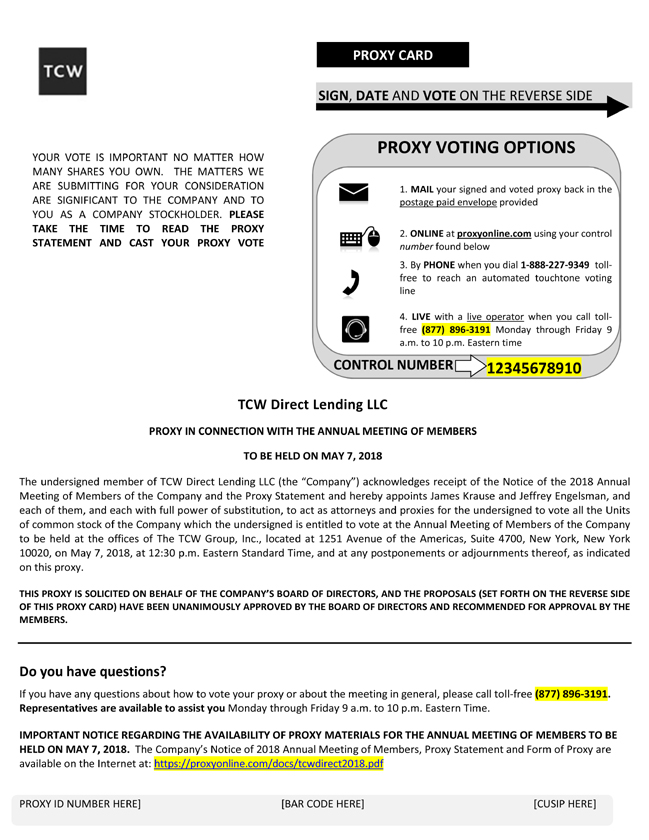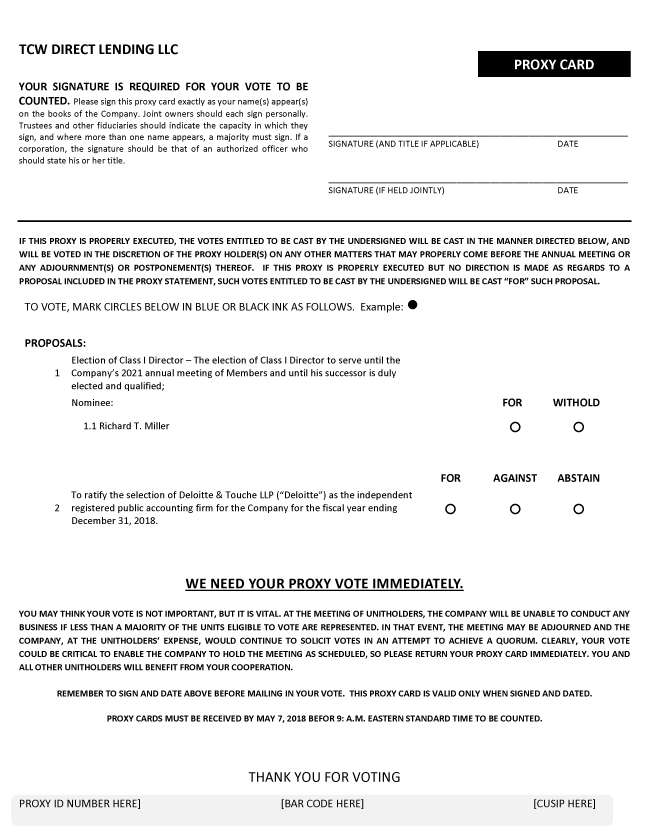Adviser or its affiliates. Notwithstanding the foregoing, the cap on Company Expenses does not apply to payments of the Management Fee, Incentive Fee, organizational and offering expenses (which are subject to the separate cap described above), amounts payable in connection with the Company’s borrowings (including interest, bank fees, legal fees and other transactional expenses related to any borrowing or borrowing facility and similar costs), costs and expenses relating to the Company’s liquidation, taxes, or extraordinary expenses (such as litigation expenses and indemnification payments to either the Adviser or the Administrator). In 2017, the Adviser incurred $1,267,000 in Company Expenses reimbursable to the Company related to the 12.5 basis point cap described above.
SECTION 16(A) BENEFICIAL OWNERSHIP REPORTING COMPLIANCE
Pursuant to Section 16(a) of the Exchange Act, the Company’s Directors and executive officers, and any persons holding more than 10% of the Company’s common units, are required to report their beneficial ownership in the Company’s securities and any changes therein to the SEC and to the Company. We are required to report herein any failure to file such reports by applicable due dates for filings. Based on the Company’s review of any Forms 3, 4 and 5 filed by such persons, the Company believes that, during the fiscal year ended December 31, 2017, all Section 16(a) filing requirements applicable to such persons were met in a timely manner.
CERTAIN RELATIONSHIPS AND RELATED PARTY TRANSACTIONS
Relationship with the Adviser and Potential Conflicts of Interest
The Company, the Adviser and the Company’s respective direct or indirect Members, partners, officers, Directors, employees, agents and affiliates may be subject to certain potential conflicts of interest in connection with the Company’s activities and investments. For example, the terms of the Adviser’s management and incentive fees may create an incentive for the Adviser to approve and cause the Company to make more speculative investments than it would otherwise make in the absence of such fee structure.
The Adviser’s Direct Lending Team (the “Direct Lending Team”) is separated from those partners and employees of the Adviser and its affiliates involved in the management of the investments of other funds and other accounts (the “Other Employees”) by an ethical wall, and accordingly, the Other Employees may be unable to make certain material information available to the Direct Lending Team. In addition, the Adviser’s other funds and separate accounts may take positions in securities and/or issuers that are in a different part of the capital structure of an issuer or adverse to the Company.
The members of the senior management and investment teams and the investment committee of the Adviser serve or may serve as officers, directors or principals of entities that operate in the same or a related line of business as the Company, or of investment funds managed by the Adviser or its affiliates. In serving in these multiple capacities, they may have obligations to other clients or investors in those entities, the fulfillment of which may not be in the Company’s best interests or in the best interest of the unitholders. For example, Mr. Miller and the other members of the investment committee have management responsibilities for other investment funds, accounts or other investment vehicles managed by the Adviser or its affiliates.
The Company’s investment objective may overlap with the investment objectives of such investment funds, accounts or other investment vehicles. For example, the Adviser concurrently manages accounts that are pursuing an investment strategy similar to the Company’s strategy, and the Company may compete with these and other entities managed by affiliates of the Adviser for capital and investment opportunities. As a result, those individuals at the Adviser may face conflicts in the allocation of investment opportunities between the Company and other investment funds or accounts advised by principals of, or affiliated with, the Adviser. The Adviser has agreed with the Board that, when the Company is able toco-invest with other investment funds or accounts managed by the Adviser, allocations among the Company and other investment funds or accounts will generally
20

